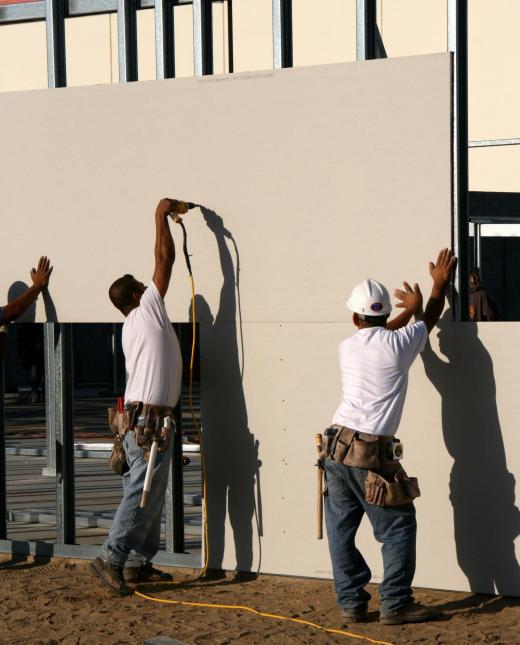A keyhole saw is a precision cutting tool with a long, thin blade used primarily for cutting tight curves and small holes in soft wood, plastic or drywall. Other names for the tool include alligator saw, drywall saw and compass saw. Keyhole saws are often used to create openings for pipes and electrical wiring, and for making small incisions that cannot be made with drills, electric saws or auger bits due to size constraints.
The blade of the keyhole saw is attached to a wooden, iron or plastic handle, and blades vary widely in length, width and number of teeth. Most keyhole saw blades are 5 to 15 inches (12.7 to 38.1 centimeters) in length, with 5 to 20 teeth per inch. Keyhole saws may be fixed or retractable, depending on how the blade attaches to the handle.

A retractable keyhole saw commonly features an iron handle, and various blades are attached to the handle with screws. The blade can also be retracted into the handle to protect it from flexing or damage if it is obstructed during use. Fixed keyhole saws are less expensive and perform the same task, but they lack the ability to retract.
In the construction trade, the keyhole saw has experienced modification to make it easier and more efficient to use for various tasks. Keyhole saw blades with a sharpened tip are available, and these blades are gently pushed through drywall or soft wood. This process negates the need for using an electric drill to create the initial hole, saving both time and power.
Using a keyhole saw requires first drilling a starter hole into the wall and then inserting the blade. The saw is moved forward and back slowly by hand, and the blade cuts on the back stroke. If a sharpened-tip blade is being used, a starter hole is unnecessary and the blade is simply inserted into the wall and used to cut away the desired portion. Applying excess pressure on the blade while cutting should be avoided, as this can cause the blade to become stuck or jammed in the wall.
Older keyhole saws require more maintenance than newer models, as the older versions typically have crosscut teeth that need to be manually sharpened by a craftsman. More contemporary models of the saw feature replaceable blades that can be removed when they become dull or damaged. Newer fixed blade keyhole saws are often replaced completely when necessary, as this usually costs less than having the blade repaired.
